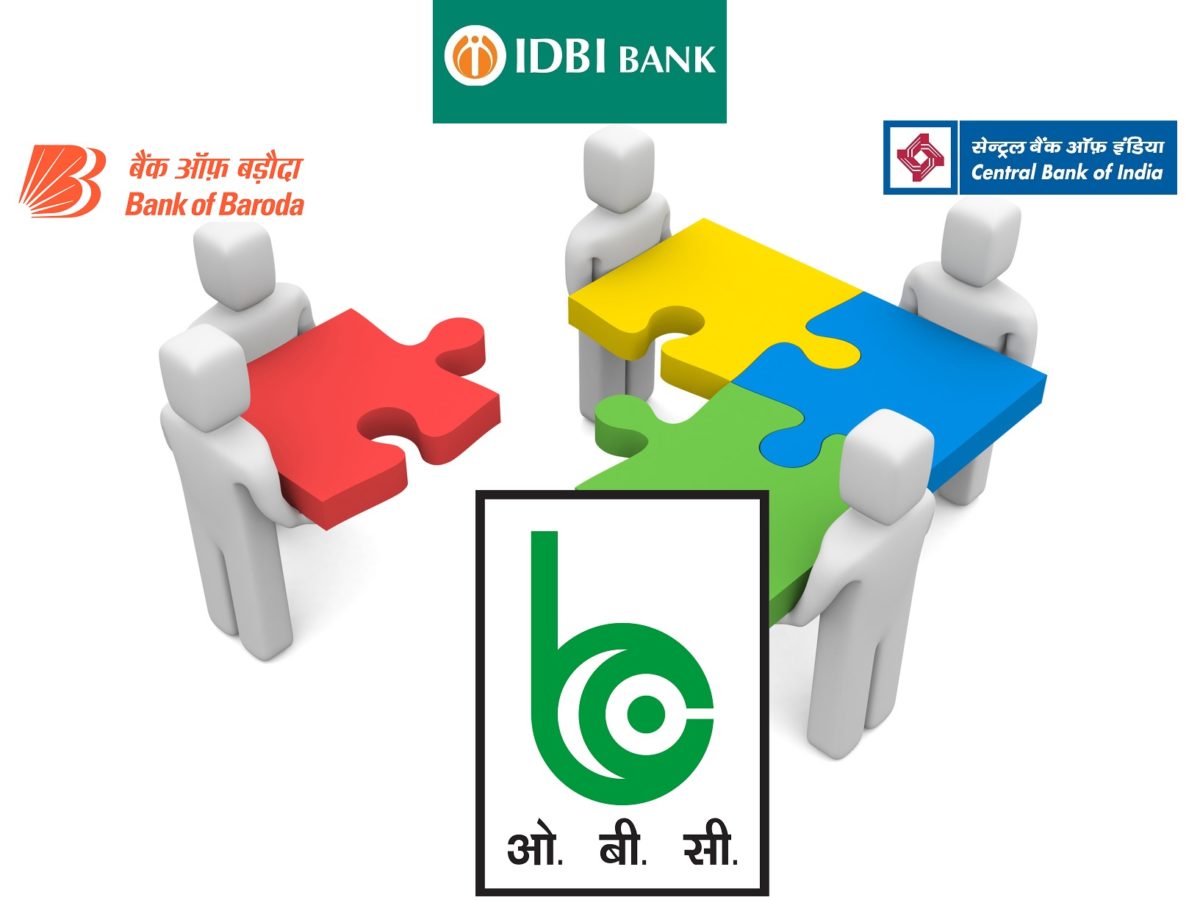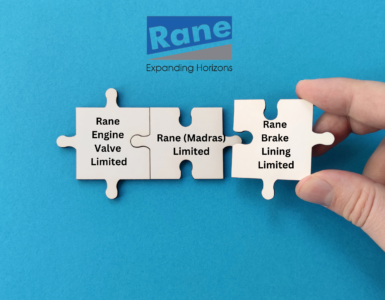To order to bring in efficiency in the functioning of loss-making public-sector banks (PSBs), the government is considering merging at least four such banks because of rising bad loans. The four banks are Oriental Bank of Commerce, Bank of Baroda, Central Bank and IDBI Bank with a combined loss of Rs 21,646 crore in FY18. In fact, barring Bank of Baroda, all the three banks are under Reserve Bank of India’s Prompt Corrective Action, a mechanism to maintain sound financial health of the banks. If any bank comes under the RBI’s Prompt Corrective Action, it cannot distribute dividends, remit profits and disburse fresh loans.
Between the four banks, their gross bad loans or non-performing assets add up to nearly Rs 1,75,000 crore. Even Bank of Baroda, which is not under RBI’s Prompt Corrective Action, made a loss of Rs 3,342 crore in March 2018. Also, IDBI Bank has a gross NPA of over Rs. 55,000 crores at last count, which constitute 28 per cent of its total advances. This means more than one rupee in four lent has gone sour. Now there are talks that Life Insurance Corporation of India (LIC) will take 30 per cent stake in IDBI Bank. At present, LIC has 16 per cent stake in IDBI Bank. The Insurance Regulatory and Development Authority allows insurers with assets exceeding Rs 2.5 lakh crore to buy up to 15 per cent equity in a company. Under special provisions, LIC can hold up to 30% stake in a company with approvals from the government, the investment committee and the regulator.
The proposed merger will allow the weak banks to sell assets, reduce overheads and rationalise branches. Last year, the Union Cabinet gave in-principal approval for public sector banks to amalgamate through an alternative mechanism. With the merger, the government hopes to stem the rise in bad loans in their books which has crippled the lending ability of the state-owned banks. In the long-run, the government is considering reducing the number of public sector banks from the existing 21 to 12 with a view to create 3-4 global sized banks. The government is drawing inspiration from the success of merger of SBI’s five associate banks and Bhartiya Mahila Bank with State Bank of India. The merger has helped the bank take its customer count to 37 crores and added a vast network of branches and ATMs.
The finance ministry and RBI are in favour of merger of public sector banks, which account for 70 per cent of the industry but are fast losing their market share. If the merger plan goes through and gets approval from the government and RBI, then it must be placed in Parliament, which reserves the right to modify or reject the scheme. Section 44A of Banking Regulation Act 1949 lays down the norms for voluntary mergers and forced mergers are done under Section 45 of the Act.
Problem with Non-Performing Assets (NPAs)
The gross NPAs of state-owned banks had crossed Rs 9 lakh crore at the end of March 2018. The NPAs are rising because of lack of governance and weakness in credit administration. State-owned banks control over 70 per cent of the banking industry by assets but carries over 90 per cent of the total bad loans in the banking system on their balance sheets. The share of PSU banks in cases related to willful defaults is far higher than private banks. Most of the NPAs have taken place because of wilful default by the borrowers or frauds. In the last 31 years, the government had infused over Rs 1.5 lakh crore in state-owned banks. It has also committed to infuse Rs 2.11 lakh crore in phases for the next three years.
ALSO READ: Bank Mergers: The need of the Hour
According to RBI’s June Financial Stability Report, public sector banks’ gross bad loan ratio or NPA may increase from 15.6 per cent in March 2018 to 17.3 per cent by March 2019 under the severe stress scenario. Bad loans of 11 state-owned banks that are under prompt corrective action may worsen from 21 per cent in March 2018 to 22.3 per cent. Also, six state-run banks facing PCA may not be able to meet the required minimum capital requirement as per the Basel norms of 9 per cent. Most state-owned banks are far from meeting minimum capital requirements as their balance sheets are weighed down by NPAs, continuous losses, rise in provisions and stagnant credit growth. Consolidation will provide optimum balance sheet for competitive advantage and could maintain a capital base to meet regulatory and growth needs. To address the bad loan problem, the board of banks will have to instill better risk management tools, bring in expert agencies for strong audit.
Consolidation of banks
Consolidation of banks could entail sale of real estate where branches are redundant, voluntary retirement to reduce headcount and hiring younger and tech-savvy employees to increase productivity. Technology will not be a big hurdle for mergers as most banks are working on same IT platform. In case some bad banks are merged with a good bank, then there will be sudden rise in its bad loans and there would be a drag on the books of the host bank for several years. However, any merger comes with its own set of issues at the time of integration. These issues range from the culture of the merging banks, their business systems and expertise. Public sector banks have strong unions who often derail any merger plans and create hurdles.
The first step towards consolidation is restoring the health of the banking system. Recent initiatives by the government, including recapitalization and establishment of the Insolvency and Bankruptcy code 2016 are aimed at addressing the concerns of rising NPAs in state-owned banks. In the past, the suggestion of consolidation among public-sector banks was initially suggested in the Narasimham Committee Report in 1991 and again in 1998. The report had recommended a three-tier banking structure through the establishment of three large banks with international presence, eight to ten national banks and many regional and local banks. The Raghuram Rajan Committee report on Financial Sector Reforms in 2008 also discussed bank consolidation and suggested takeover of small, regional and unprofitable banks by well-managed financial institutions seeking complementary assets.
History of bank mergers
The history of bank mergers in the country is full of examples of weak banks being forced to merge with strong banks at the cost of the latter. Since 1961, under the Banking Regulation Act, 81 bank amalgamations took place. Of these, 47 took place before the first phase of bank nationalization in July 1969. Of the remaining, 34, in 26 cases private banks were merged with public sector banks and in the remaining eight cases, both the banks were private sector banks.
Post economic reforms, there were 31 bank mergers. Before 1999, amalgamations of banks under the Section 45 of Banking Regulation Act of 1949, took place because of weak financials. Under the said Act, Reserve Bank of India can make a scheme of amalgamation of a weak bank with a strong one if it is in the interest of the depositor and the overall banking system. In such a case, the operation of the weak bank is kept under moratorium for a certain period to ensure smooth implementation of the scheme. The merger of Global Trust Bank with Oriental Bank of Commerce in 2004 was an example of such a merger. Later, even business and commercial interest were evaluated which resulted in voluntary mergers like merger of New Bank of India with Punjab National Bank in 1993 and the acquisition of State Bank of Saurashtra in 2008 and State Bank of Indore in 2010 by State Bank of India. Merger of its subsidiaries is a move to restructure within the group as SBI held majority equity stake in all its subsidiaries.
ALSO READ: Public Sector Bank Mergers – A myth becoming a reality?
The second type of merger is the voluntary one under Section 44A of the Banking Regulation Act like ING Vysya Bank merging with Kotak Mahindra Bank in November 2014 which had the necessary synergies for a successful merger. ING Vysya Bank had a strong presence in South India while Kotak had an extended franchise in the west and North India which helped to create a large financial institution with a pan-India presence. Before the merger, 15% of the Kotak branches were in south India, which became 38% after the merger and Kotak had a balanced presence in different parts of the country. The merger increased Kotak’s branches and its ATM network by 47% and 35%, respectively. For Kotak, the deal was indeed strategic, accretive, and pushed it up from a niche to a more scaled player to become the fourth largest private bank in the country in terms of total business.
Similarly, in the private sector, the merger of Bank of Madura and Sangli Bank with ICICI Bank in 2001 and 2007 and the merger of Centurion Bank of Punjab with HDFC Bank in 2008 are appropriate examples of synergies working in tandem. The Reserve Bank of India has been supportive of voluntary mergers, which create value for banks and customers in general. Weak banks can instead become stronger by focusing on their core areas like corporate or retail lending in a part of the country instead of full presence across the country. These banks must put in place a strong mechanism for recovery of bad loans at an early stage before the matter goes out of hand. Weaker banks can streamline by redeploying capital out of non-strategic and sub-optimal business, review their branch and other networks and pare down losses by introducing technology and efficiency and operating control of these banks should be handed over to professionals.
Merging weaker state-owned banks is a complicated task and difficult to execute. Sensitive issues like staffing, branch integration and priority sector lending will have to be handled carefully. The treatment of legacy issues, closure of redundant branches, redeployment of human resources and efficient allocation of capital will have to be considered before merger. Also, the government will face the wrath of nearly eight lakh employees as the employees of state-owned banks are highly unionised. For instance, employees of associate banks of State Bank of India like State Bank of Hyderabad, State Bank of Mysore and State Bank of Travancore have made it clear that they will not agree to any merger with SBI.
Purpose of such merger is to increase efficiency, reduce losses and make them profitable and sustainable without any support from the government. Vanilla merger may face all or some of the above-mentioned issues and benefits expected may get marginalized and it may be difficult to get any permanent and continuing benefits post-merger. In the course of merger, the government should implement some innovations like i.e. major bad loans not getting transferred as part of the merger, some valuable but surplus properties get parked with some other company, asking repayment of certain loans, all other measures which improves capital adequacy of the merged giant bank without any cash infusion by the government
Before finalizing the contours of the merger, the government must look at the quality of assets of the banks to be merged, business potential and the funds that would be required to infuse. The government should force the loss-making state-owned banks to sell assets and chase bad loans till they fall below 7-8% of advances. State-owned banks need to strengthen their organizational structure, tighten risk management and improve credit delivery, all critical for turnaround. The government may create common strong bad loan recovery process for the merged bank even before the merger. Amendments to the SARFAESI Act (Securitisation and Reconstruction of Financial assets and enforcement of Security Interest Act), and expediting the Debts Recovery Tribunal process by some more amendments to the Act can help in the recovery of the bad loans and help in the merger process.




